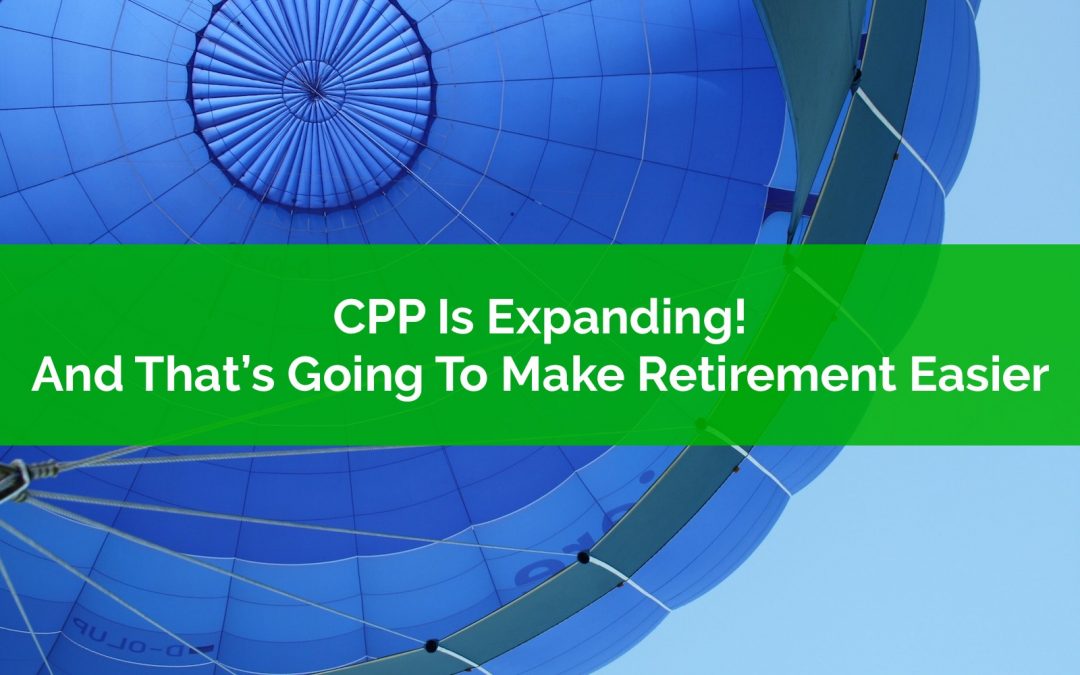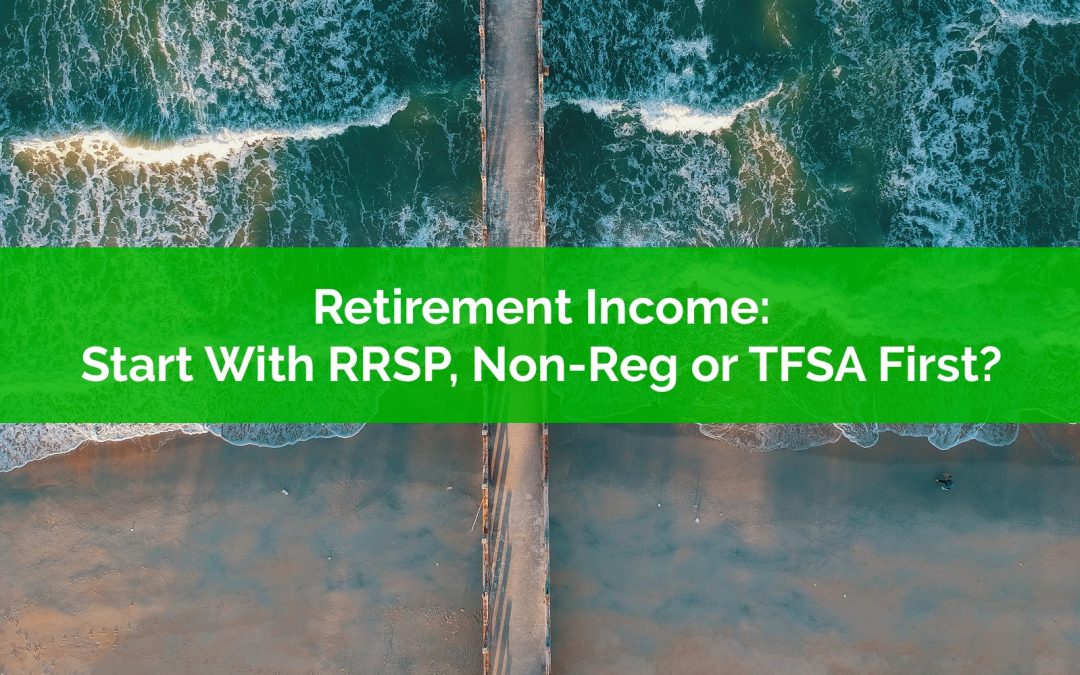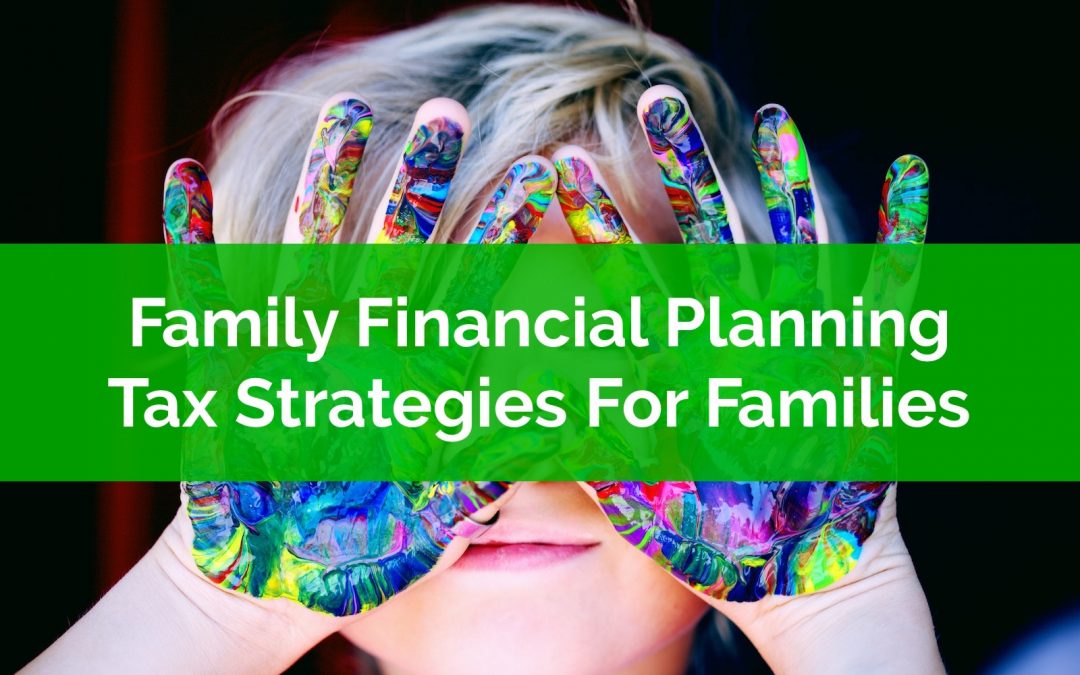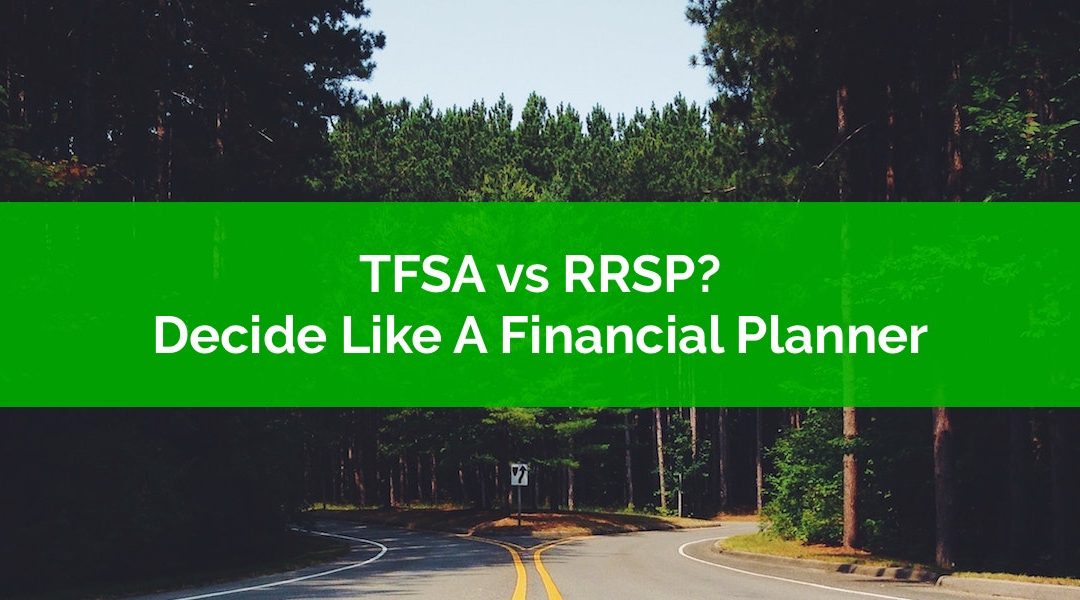
by Owen | May 6, 2019 | Retirement Planning, Tax Planning
Splitting income is an interesting tax planning opportunity for couples. Because we’re taxed individually on our income it can be advantageous to split income and reduce the overall income tax bill for the household.
The goal of income splitting is to perfectly split the household income and the corresponding tax bill. Splitting income 50/50 is the ideal way to minimize the household’s income tax. However, the CRA doesn’t like this, and there are lots of rules in place to prevent income splitting in certain situations.
Income attribution is what happens when you split income that you shouldn’t have. Even if you didn’t earn that income it can still be attributed back to you and needs to be captured on your annual tax return.
For example, if the higher-income spouse gives the lower income spouse $10,000 to invest, any income earned on that investment is attributed back to the higher income spouse, even if it doesn’t get paid into their account and/or they don’t receive a T5/T3 tax slip.
Income attribution is a huge deal. It requires people to properly report their income. The onus is on the couple to split their income properly. If a household doesn’t properly split their income, and they fail to report income attribution, it can come back later in the form of an audit and/or fines & penalties.
The goal with income splitting is to avoid these attribution rules and legally split income to the extent it’s possible.
Income splitting isn’t for everyone but many people can benefit from at least some basic income splitting.

by Owen | Apr 29, 2019 | Government Programs, Retirement Planning, Tax Planning
The Canada Pension Plan is expanding this year and that’s going to make retirement easier in the future. This expansion is part of a multi year effort to increase the size of CPP payouts in the future. The increased CPP benefits will make retirement easier for many people. It will mean less personal savings are needed for retirement and if you continue to save at the same rate as today you might actually be saving too much!
CPP is one of the best pension funds in the world. Actuaries have stated that CPP is solvent for 75+ years. That means anyone contributing to CPP now has very little to worry about when it comes to future CPP payments.
Despite Canada Pension Plan being one of the best pension in the world I still come across comments from people who are negative about CPP and OAS. They prefer not to count these retirement pensions in their financial plans. Instead they prefer to save more for retirement.
While I understand the desire to be prudent, this line of thinking makes things more difficult than they need to be. Retirement pensions like CPP and OAS provide an enormous amount of retirement income and ignoring them just means you have to save more.
Ignoring CPP and OAS is like running in a windstorm with a parachute tied to your back!
Why add that extra resistance when it’s already hard enough to save for retirement?!?
The good news for many people is that CPP enhancement will now fund even more of their retirement. Future CPP payments will make up an even higher % of retirement income. Before CPP reform the original goal for CPP was to cover 25% of earnings (up to the max) but with CPP enhancement the goal is to increase this to cover 33% of earnings (with a higher max too!). The result is that CPP payments will be up to 50% higher in the future!
This expansion will happen in two phases and the impact on your financial future will depend on how much you’re earning today and how long you’ll contribute under the new rules.
Unfortunately, if you’re retiring this year you won’t see much of an increase. But if you’re retiring in the next 5, 10, 20+ years you’ll likely see your CPP payments increase anywhere from $1.44/month up to $500+/month depending on timing and contributions! That’s an extra $6,000+ per year at age 65 or $8,500+ per year if delayed to age 70! And double that for couples!
The new Canada Pension Plan expansion won’t impact everyone equally, some people will gain more than others. Let’s look at the two phases of the expansion and how it will impact us.

by Owen | Feb 25, 2019 | Tax Planning
When it comes to generating an income in retirement things can get very confusing, very fast. During your working years you probably have one, maybe two, sources of income, typically a paycheck that arrives every 2-weeks, in retirement however you will likely have 5-10 different income sources coming every month.
A typical retiree will have both CPP and OAS payments in retirement (unless you’re extremely high-income and your OAS is entirely clawed back), plus a typical retiree will also have some investments in an RRSP, TFSA and non-registered account to draw from. Add to that pension payments from a defined benefit pension or maybe a defined contribution pension that was converted into a LIRA/LIF, and we’re up to 6 income sources already. Then we have to add additional payments from government benefits like the federal GST/HST credit, Guaranteed Income Supplement (GIS), and provincial benefit programs like the Trillium benefit in Ontario. Some of these arrive monthly, some quarterly, some just once per year.
And if that wasn’t confusing enough, each income source has its own tax and benefit claw back rules too.
For example, RRSP, CPP, OAS and pension income are all taxed at 100% of your marginal tax rate, but capital gains are taxed at 50% your marginal tax rate, and at some income levels dividend income has a negative tax rate!
Then you have TFSA withdrawals which have no tax at all, and most government benefits are tax-free as well!
All those different income sources naturally create a lot of different strategies to on how to drawdown your retirement assets in the most efficient manner…
Some people believe that drawing down their RRSPs first is the best strategy. Others believe drawing down non-registered assets first makes more sense. There might even be a few people out there who think that drawing down their TFSA first is best.
But the best way to create retirement income and drawdown your retirement assets is actually to mix them all together. Like an expert baker, the key is to mix retirement income sources in just the right proportions to get the best result. The tricky thing is that the exact proportions will depend on your specific situation, how much you have in each account, and how much retirement income you’re trying to create each year.
How much is planning your retirement income worth? How about $100,000 or more in reduced income tax! Even low- and mid-income seniors can benefit from strategic retirement income planning to help them avoid GIS claw backs, which can easily be worth $1,000’s per year.
At the end of this post we’ll show you 7 different withdrawal scenarios’. The difference between the best and the worst is over $328,490 in today’s dollars.
First, a bit of background on why we want to mix retirement income…

by Owen | Feb 11, 2019 | Financial Planning, Tax Planning
Families in Canada have a very unique financial planning opportunity that isn’t available to other Canadians. This opportunity can help boost their savings and provide them with more cash flow to save in the future. With a bit of careful planning families can reduce their overall marginal effective tax rate and save more money.
First, a little background…
In Canada, there are two types of “tax rates”. The first is income tax. This one is easier to understand. As your income increases you pay more income tax. The second tax rate is actually a “benefit claw back rate” and it works the same way as tax rate, the more your income increases the less you receive in benefits. In Canada, most government benefits are “clawed back” based on household net income. This means that as you earn more income your benefits will be reduced, or “clawed back”, and the effect is the same as income tax.
Families have a unique tax and financial planning opportunity because some government benefits don’t get clawed back until family income is well into the $100,000+ range. This means there are certain tax strategies that are unique to families, even those with above average incomes.
All families with children under the age of 17 are eligible for the Canada Child Benefit (CCB). The Canada Child Benefit is one of the most generous benefits in Canada, it’s even available to high-income earners, but it also has one of the highest claw back rates too. But, with careful planning it’s possible to avoid some of these claw backs, increase your annual benefit, and as a result increase your annual savings as well.
Claw back rates on the Canada Child Benefit range from 3.2% to 23% for each extra dollar you earn. The exact claw back depends on the number of children and your household net income.
The claw back means that if you earn an extra $1,000 this year, your benefit could be reduced by $32.00 to $230.00 next year!
This is even higher for low-income families who also receive other government benefits, like the GST/HST credit or Trillium benefits in Ontario, which all have claw back rates as well.
The opportunity for families is that RRSP contributions will DECREASE their taxable net income and will INCREASE their benefits. That means that a $1,000 RRSP contribution this year will INCREASE your Canada Child Benefit by $32.00 to $230.00 next year!
This means that families in particular can strategically save using an RRSP instead of a TFSA and boost their government benefits. This is counter to most financial advice that suggests low-income Canadians should prioritize their TFSA first. While this advice might be true for many low-income Canadians, it’s not necessarily true for families.
We’re going to take a look at four examples to show you just how impactful this type of financial planning can be.
Note: These are examples only, specific to Ontario, and should not be used for financial planning purposes. Income tax and benefit rates are very dependent on family income, income split, ages of children, province of residence etc. To understand the impact for your family we recommend building a custom financial plan with an advice-only financial planner.

by Owen | Feb 4, 2019 | Financial Planning, Insurance And Risk Management, Tax Planning
Note: The following is a guest post from lawyer Manda Ivezic. Manda practices in real estate, wills & estates, and small business law in London, Ontario and provides wills at a very reasonable rate of $300 for an individual and $475 for a couple.
A recent LawPRO survey estimated that 56% of adult Canadians don’t have a will. Wills were least common for 27-34 year olds, 88% didn’t have one, and 71% of respondents didn’t have a power of attorney at all.
Why do so many of us put off wills and estate planning? Common reasons to delay estate planning include:
You’re too young to anticipate your death – you see yourself living a long and full life, dying of old age far in the future. You have plenty of time ahead of you to take care of your will.
It’s overwhelming or unpleasant to think about.
You think it’s unjustifiably costly.
You don’t think you’re wealthy enough to need a will.
You don’t realize how important it is, because you don’t understand what exactly will happen in the absence of a will or power of attorney.
The problem with putting off wills and estate planning is that you can’t safely assume how the future will play out.
Delaying may mean it never gets done – an accident or illness could make you incapable of creating a will. Not preparing will and estate plan only makes a bad situation worse. The consequences of dying without a will can easily outweigh the time and lawyer’s fee.
As well, a lawyer’s input can result in substantial cost savings down the line compared to the upfront cost, maximizing what is left to your beneficiaries. A will also saves time and trouble down the road. At the very least, appointing an executor will prevent someone having to apply to court to be appointed as your estate’ executor – an avoidable burden at the worst time for your family.
Get this task out of the way and give yourself peace of mind. Here’s what you need to know when creating a will and estate plan…

by Owen | Oct 22, 2018 | Financial Planning, Tax Planning
It’s getting to be that time of year again. Time for taxes, time for RRSP contributions, and time to debate whether a TFSA contribution or an RRSP contribution is the best choice.
RRSP season naturally creates this question for many people. Is an RRSP contribution really the right choice? Or would a TFSA contribution be better?
Unless you’re fortunate enough to be maxing out both accounts, the TFSA vs RRSP decision has been an annual conundrum since the introduction of the TFSA in 2009. If you’re not well versed in the differences between the TFSA and the RRSP, read this intro to the TFSA and this intro to the RRSP to get a better sense of the differences.
The TFSA and the RRSP two of the main tax advantaged retirement accounts in Canada. You can use one, the other, or both to save for retirement.
Using the TFSA alone can be enough for a luxurious retirement, one that is 100% free of taxes. However, in certain situations, the RRSP can provide A HUGE benefit by lowering your lifetime tax bill.
Which one you use depends on your situation, and not just your situation now, but also your situation in retirement. To make the decision even more complex there are also some soft benefits that can help push you toward the TFSA or the RRSP when all the other factors are equal.
Deciding between the TFSA or the RRSP can be tough. Making the right decision could be worth $10,000’s to $100,000’s. If you feel like you need help then please reach out to us. We help clients optimize their taxes and benefits, and choosing between the TFSA and the RRSP is an important consideration. A financial plan from a fee-for-service planner can easily save you thousands of dollars and also make these tough financial decisions much easier.
This TFSA vs RRSP guide takes a financial planner’s perspective on the decision between a TFSA and RRSP. Learn how to make the TFSA vs RRSP decision just like a financial planner would. Look at all aspects of the decision, not just taxes, not just government benefits, but everything.
Here’s how to make the TFSA vs RRSP decision like a financial planner. Each factor is important, but the weight you give each one depends on your own situation and goals.
Page 10 of 11«...7891011»






